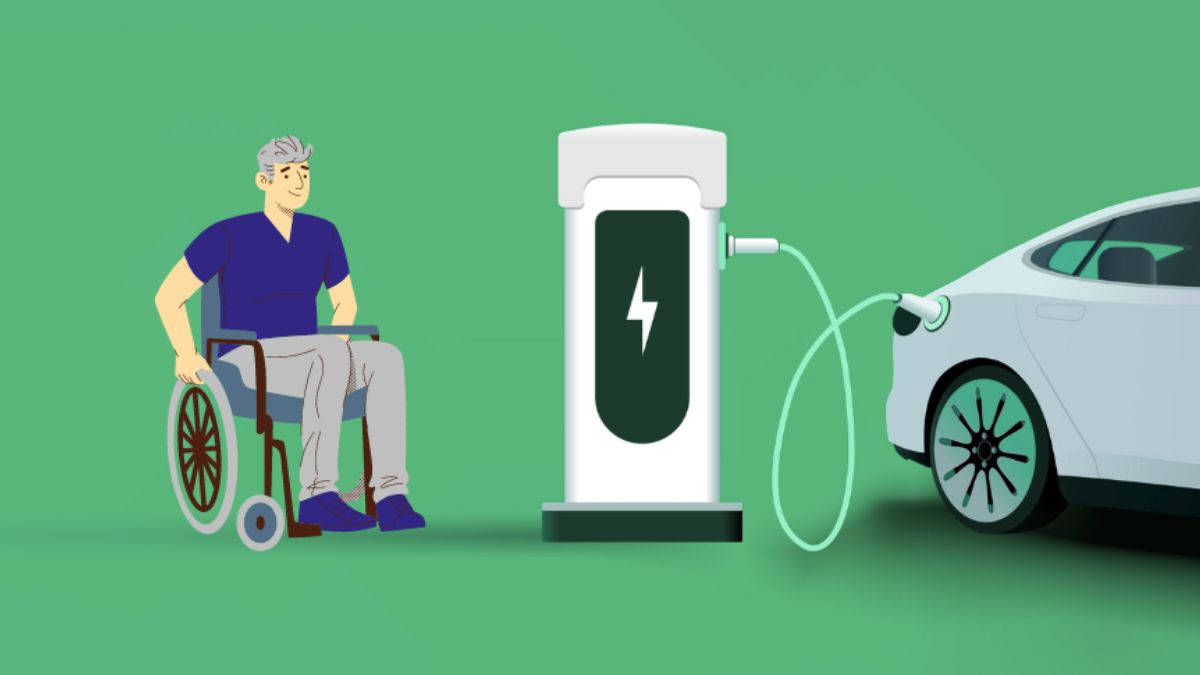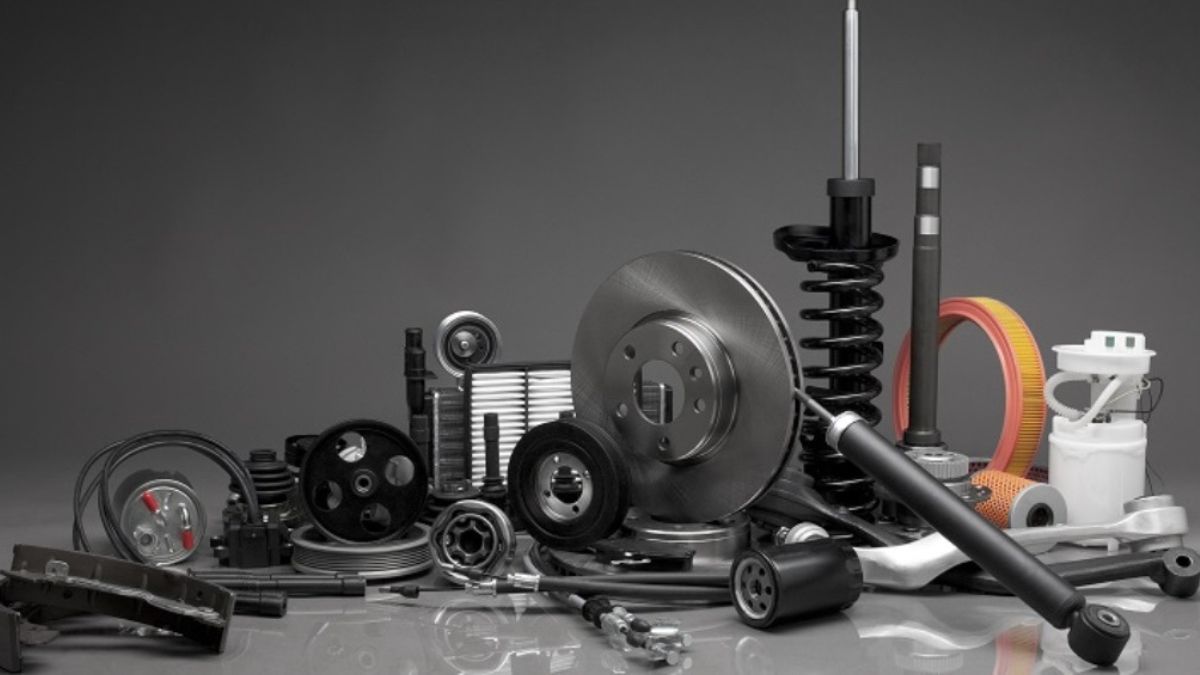AUTOMOTIVE
The Future of EV Charging: Making Electric Mobility Accessible

The Growing Demand for EV Charging Infrastructure
Electric vehicle ownership is experiencing a significant boom as the global population becomes more environmentally conscious and regulations on emissions tighten. The International Energy Agency notes that over 135 million electric cars will be on the roads by 2030. This substantial increase requires adequately reimagining the current infrastructure to support the growing EV community. These systems provide a seamless charging experience, thus bridging the gap between the increasing number of EVs and the charging stations needed to support them. Additionally, the rise in various EV ownership forms— from personal to fleets servicing public transportation—further highlights the need for diverse and flexible charging solutions.
Emerging Technologies in EV Charging
Technology is advancing rapidly, especially in the context of EV charging solutions. Innovative concepts such as wireless charging pads eliminate the cumbersome need for plugging in, providing an intuitive user experience. Moreover, ultra-fast charging stations reduce electric vehicles’ downtime during recharging, making it almost as quick as refueling a traditional car. Another breakthrough technology is vehicle-to-grid (V2G) solutions that allow EVs to draw power from the grid and return excess power, thus stabilizing local energy demands and enhancing overall grid resilience. These emerging technologies improve charging efficiency and revolutionize the user experience by incorporating innovative systems for optimal performance. Developing an efficient electric car charging stations payment system is crucial for managing this demand.
An exciting development is integrating artificial intelligence (AI) into charging stations. AI can optimize charging times and loads based on real-time traffic data and energy grid demands, thereby preventing congestion at charging stations and optimizing grid load. This technology ensures that energy is provided efficiently and sustainably, reducing peak load issues commonly faced as the number of EVs on the road increases. Further, AI-driven predictive maintenance can alert operators about potential technical issues before they become failures, enhancing the reliability and lifespan of charging stations.
The Role of Public and Private Partnerships
Collaborations between governments and private enterprises often drive significant progress in EV charging infrastructures. These partnerships leverage public resources and private innovation to scale infrastructure rapidly and efficiently. For instance, governmental bodies offer grants and incentives for companies investing in EV infrastructure, while private companies bring technological advancements. The United States Department of Energy has been particularly active in creating these symbiotic partnerships, fostering nationwide network expansion. Such initiatives ensure that charging stations are not limited to urban areas but are also available in rural regions, making electric vehicles a viable option for a broader range of consumers. Indeed, such collaboration creates a roadmap for other industries looking to merge sustainability with technological advancement, showcasing how aligned goals can significantly impact the environment and economy.
Consumer Awareness and Education
One of the prevailing challenges to accelerated EV adoption is consumer awareness. Many potential users still misunderstand electric vehicles despite their ecological and economic benefits. Educational initiatives can dispel myths and provide potential buyers with the knowledge to make informed decisions. Reports, like one from the Environmental Defense Fund, highlight the importance of guidance for first-time EV buyers. By breaking down charging station networks, costs, efficiency, and the environmental impact, these resources reassure consumers about the practical aspects of owning and operating an EV, ultimately increasing adoption rates. Community workshops, digital tutorials, and interactive content are instrumental strategies to elevate consumer knowledge and engagement with EV technology.
Convenience: A Cornerstone of EV Charging
Convenience remains a prime factor in transforming EV charging from a daunting task into a routine practice. Strategic placement of charging stations and integration into mainstream locations like shopping malls, commercial centers, and residential complexes make charging accessible across varying locations. The availability of real-time updates on charging station status and mapping through smartphone apps gives users confidence in the accessibility and availability of essential infrastructure. This seamless experience removes barriers and promotes acceptance of electric vehicles as a practical transportation solution. Moreover, the development of mobile concierge services that allow users to book and schedule charging times is enhancing the personalization of EV ownership, catering to individual energy needs and routines.
Addressing Range Anxiety
Range anxiety is a prevalent concern among potential EV owners, impeding broader adoption. Strategic infrastructure improvements and technological advancements can alleviate the fear of a depleted battery far from a charging station. Increasing the density of fast-charging stations ensures drivers can quickly find facilities when needed, minimizing concerns about running out of power on the road. Additionally, integrating innovative systems that guide drivers to the nearest available charging point further eases anxiety, making electric vehicles a more attractive option for diverse lifestyles. Effective communication strategies that provide drivers real-time data about their driving range, nearby charging stations, and estimated arrival times help instill confidence in using electric vehicles for longer journeys.
Furthermore, hybrid charging models that utilize both home and public charging systems offer versatile solutions to minimize downtime, emphasizing the importance of multifaceted approaches in addressing potential consumer concerns. Embracing these hybrid systems can lead to a more resilient and user-friendly infrastructure, ensuring electric vehicle drivers can travel without significant interruptions.
Future Prospects of EV Charging Infrastructure
As we look to the future, the EV charging landscape appears promising and ripe with potential. The urgent need for sustainable solutions drives continuous innovation and investment in charging technology and infrastructure. Future developments are expected to yield even faster charging options, further enhancements in wireless technology, and more sustainable energy integration. It is critical for industry leaders and policymakers to maintain momentum, fostering a regulatory and innovation-friendly environment to support the growth of electric mobility. This will reduce the reliance on fossil fuels and pave the way for a cleaner and more sustainable future. In this evolving tapestry of green technologies, adopting an energetic approach with consistent iterations and levying lessons learned can ensure electrification becomes synonymous with effective mobility solutions worldwide.
Moreover, global cooperation and sharing best practices will be crucial in addressing common obstacles and facilitating seamless EV integration across diverse economies. This international perspective ensures the development of charging infrastructure that is both technologically advanced and universally accessible, promoting widespread adoption and environmental sustainability.
AUTOMOTIVE
Thinking Ahead: How Auto Styling Can Boost Resale Value and Daily Satisfaction

Introduction
In today’s fast-paced world, where visual appeal holds significant weight, the impact of auto styling on a vehicle’s market value and owner satisfaction cannot be overstated. From the glossy finishes to the subtle interior touches, enhancing your car’s appearance is not merely about aesthetics — it is a calculated investment. Decisions such as ceramic coating for cars or choosing unique modifications serve to not only make your vehicle stand out but also increase its potential resale value. As we delve into auto styling, it becomes apparent that these enhancements cater to financial gains and the daily enjoyment of vehicle ownership.
Auto styling is increasingly viewed as a strategic asset. Like a well-tailored suit or an expertly designed home, a car’s exterior and interior can significantly elevate its perceived value.
The Influence of Auto Styling on Resale Value
A car’s aesthetic appeal has long been recognized as a crucial determinant of its resale value. When a potential buyer steps onto a lot or views an online listing, the vehicle’s curb appeal often draws them in. Studies have shown that vehicles fitted with contemporary styling cues and well-maintained finishes will likely fetch a premium. By carefully choosing enhancements that cater to widely accepted tastes and trends, sellers can position their vehicles to attract higher offers. In this context, investing in services like ceramic coating for cars in Boise, ID, can help preserve the vehicle’s finish, contributing to a polished, well-kept appearance that supports resale value.
Aesthetic enhancements are not merely frivolous expenses but strategic investments. For example, opting for a high-quality paint job or adding unique body modifications such as a custom grille or spoilers can transform a vehicle’s presence. Buyers often equate visual quality with care and maintenance, making them more inclined to trust and value a vehicle that looks well-cared for.
Key Styling Enhancements for Increasing Appeal
Exterior Upgrades
The exterior of a vehicle is its first impression and, often, a lasting one. Simple upgrades such as a fresh coat of paint, the addition of stylish rims, or even minor changes like updated door handles can significantly enhance a car’s appeal. These modifications serve as visual enhancements and improve perceived vehicle integrity. Consistency with market trends, such as opting for popular colors or finishes, ensures these enhancements appeal to a broader audience. In some cases, those searching for automotive ceramic coating near me are also aiming to protect these exterior improvements, as ceramic coatings help preserve paint quality and extend the life of cosmetic upgrades.
Interior Enhancements
While exterior changes catch the eye, interior enhancements captivate the soul. Features like a refined dashboard loaded with modern functionalities or leather seating that provides comfort can significantly improve the driving experience. Resources like Edmunds offer advice on which interior upgrades can add substantial value. Contemporary in-car technology, ambient lighting, and premium sound systems are increasingly sought-after features that can turn a mundane vehicle interior into an enticing retreat.
Auto Styling for Personal Satisfaction
Beyond the financial benefits, the satisfaction derived from a well-styled car can profoundly enhance daily commutes. A vehicle that reflects an owner’s taste becomes more than just a mode of transportation; it becomes an extension of their personality and lifestyle. Customized paint, personalized accessories, and premium interior fittings make driving more enjoyable and fill the owner with pride at every excursion.
It is worth noting that while enhancing resale value is crucial, driving a car that feels uniquely “yours” offers intangible rewards. The confidence and joy incited by a beautifully styled car can make a significant difference in day-to-day life.
The Psychology Behind Car Aesthetics
The emotional connection between humans and their vehicles is deeply rooted, with appearance playing a pivotal role. A well-styled car evokes emotions of pride and achievement and positively influences the owner’s psychological state. Seeing a pristine, shiny car can boost one’s mood and set a positive tone for the day’s journey. This phenomenon underscores the psychological importance of investing in a vehicle’s aesthetic appeal.
Professional Styling vs. DIY
When considering auto styling, owners face the choice of hiring professionals or opting for a DIY approach. Professional services offer expertise, high-quality materials, and assurance of precision. They are invaluable for complex modifications or substantial overhauls. On the other hand, DIY enthusiasts can enjoy personalizing their vehicles, adding a sense of accomplishment to the project. DIY projects allow for creativity and personal expression, often transforming the car into a unique reflection of its owner. When making this choice, weighing the budget, skill level, and desired outcome is essential.
Styling Trends Impacting Car Resale Value
In an ever-evolving market, staying attuned to emerging styling trends is essential for enhancing resale value. Technological advancements and a shifting consumer base mean that today’s must-have feature could soon become tomorrow’s standard. A growing emphasis on sustainability has led to the popularity of eco-friendly materials and energy-efficient technologies. Incorporating such trends appeals to environmentally conscious buyers and may provide a competitive edge in the resale market.
Conclusion
In conclusion, auto styling is more than skin deep. It is a savvy investment that pays dividends in satisfaction and financial terms. Car owners can maximize the benefits of their styling efforts by embracing the latest trends, enhancing the vehicle’s aesthetic through strategic upgrades, and finding a balance between resale value and personal delight. Whether adding a ceramic coating or exploring interior upgrades, each decision contributes to a richer ownership experience and a potentially higher return on investment.
AUTOMOTIVE
Choosing the Right Spare Parts for Optimal Performance and Longevity

Introduction
Maintaining the efficiency of your devices is integral to everyday life, whether it’s a smartphone, kitchen appliance, or any other electronic gadget. At the heart of this efficiency lies choosing the right spare parts. They significantly ensure your appliances and gadgets function smoothly over time, minimizing downtime and enhancing user experience. When looking to replace or upgrade components, please don’t hesitate to rely on reputable sources of quality and reliability. For example, platforms like samsungparts.com provide an array of authentic pieces tailored to meet specific needs. Making informed decisions in part selection can save you from common pitfalls associated with frequent repairs, thus ensuring your devices have a lengthy and efficient lifespan.
Understanding the Importance of Spare Parts
Spare parts serve as essential components rather than simple substitutes; they are fundamental to the smooth functioning of devices and can significantly impact the longevity and performance of the equipment. Choosing compatible and high-quality parts is essential to preserving the condition and integrity of your technology. Mistakes in selection can lead to degraded performance, soaring unnecessary expenses, and heightened frustration with repeated fixes. Emphasizing the profound significance of this process equips you with the requisite knowledge to keep your devices functioning optimally over their intended lifespan, thereby contributing to sustainable use and performance.
Factors to Consider When Selecting Spare Parts
- Quality Matters: In gadget maintenance, quality remains an uncompromising factor. High-quality spare parts keep your device performing at its zenith, mitigating the need for frequent repairs and fostering longevity. Choosing components from manufacturers known for their established reputation for quality guarantees that you are investing in both durability and reliability. Such parts typically outshine their lower-quality counterparts regarding robustness and reliability, leading to fewer issues and less downtime over the device’s life. For revelations on quality spare parts, consulting reliable reviews like those from Consumer Reports can provide excellent guidance, empowering you to choose wisely.
- Compatibility Considerations: Ensuring compatibility is paramount when selecting spare parts. Each device operates with specific requirements, and using incorrectly matched parts can lead to operational failures or even irreparable damage. Checking model numbers against user manuals is a surefire way to confirm compatibility and avoid costly mistakes. In cases involving unique or rare models, contacting customer support for expert advice is prudent. Doing so prevents incompatibilities that might result in frustrating and expensive errors and ensures the parts work harmoniously with your device.
- Balancing Cost and Benefits: Though inexpensive options might lure budget-conscious buyers, a thorough cost-benefit analysis can paint the complete picture. Cheap parts tend to necessitate frequent replacements, inadvertently inflating long-term expenses. To mitigate this, prioritize value over mere pricing. Investing in parts that balance affordability and superior quality safeguards your device’s performance and prevents the hassle of recurrent repairs. This approach enhances cost-effectiveness by ensuring the device serves you well without compromising quality standards.
The Role of Manufacturer and Brand Reputation
Selecting parts from manufacturers with sterling reputations is a testament to quality and optimal compatibility. Renowned manufacturers adhere strictly to quality control, yielding components that align seamlessly with user needs. Delving into brand reputation involves closely examining consumer reviews, utilizing industry insights, and verifying the company’s standing. For accurate and insightful information, resources like Reuters provide industry reports that spotlight reliable manufacturers, facilitating informed and enlightened buying decisions.
Where to Purchase Spare Parts
Securing spare parts from trustworthy vendors is as pivotal as making a sound selection. Ensuring the authenticity of parts requires buying from validated and recognized suppliers. You offer diverse options with quality assurance by opting for established online marketplaces, authorized dealers, and local shops. Evaluating these avenues helps uncover genuine parts that accurately match your device’s requirements, averting counterfeit products and ensuring longevity and efficiency.
Maintenance and Care Tips to Extend Device Longevity
Adopting a diligent approach to maintenance and care is instrumental in extending the lifespan of your devices. Consider the following practical tips:
- Conduct routine cleaning and inspections to identify potential issues early and prevent their development into more serious problems.
- Adhere to maintenance schedules stipulated by manufacturer guidelines, which often include detailed prescriptions on upholding device health.
- Preserve your devices by storing them in optimal conditions that prevent exposure to harmful elements such as dust, moisture, and accidental damage.
- Timely replacement of deteriorated components should be prioritized to prevent additional damage and maintain the device’s overall health and functionality.
Implementing these strategies greatly extends your’ life, ultimately delivering a valuable and enduring user experience while conserving resources and reducing the frustration of unexpected repairs.
AUTOMOTIVE
The Evolution of Design: How the Make1M McLaren Redefines Supercars

The world of supercars has always been synonymous with speed, luxury, and cutting-edge design. Enter the Make1M McLaren—an automotive marvel that is not just a car but a statement. With its sleek lines and jaw-dropping performance, this vehicle redefines what it means to be a supercar in today’s fast-paced society.
As we embark on a journey through the evolution of design and technology in the realm of high-performance vehicles, we’ll explore how the Make1M McLaren stands apart from its predecessors. Prepare to discover innovations that push boundaries and set new standards in an industry where every detail matters. Buckle up; it’s time to dive into the thrilling world of supercars!
The History of Supercars
The history of supercars is a fascinating journey through engineering marvels and unabashed speed. It began in the early 20th century, with vehicles like the Bugatti Type 35 setting records on racetracks.
As technology advanced, so did performance. The 1960s introduced iconic models such as the Ferrari GTO and Lamborghini Miura. These cars combined striking aesthetics with mind-blowing horsepower.
The term “supercar” gained traction in the late 1970s when manufacturers pushed boundaries further. Cars like the Porsche 917 showcased incredible velocity, influencing future designs.
By the ’80s and ’90s, brands like McLaren emerged, crafting masterpieces that balanced power and luxury. Vehicles became not just fast but also symbols of prestige.
Today’s supercars are more than just machines; they embody innovation and style while captivating enthusiasts worldwide. Each era builds upon its predecessor, creating a thrilling lineage of automotive excellence.
How the Make1M McLaren is Redefining the Supercar Industry
The Make1M McLaren is not just another entry in the supercar market; it’s a bold statement redefining what performance and luxury mean. This vehicle seamlessly blends high-octane power with cutting-edge technology, setting new benchmarks for speed and agility.
What makes the Make1M stand out is its aerodynamic design. Every curve and contour has been meticulously crafted to enhance airflow, resulting in astonishing stability at incredible speeds. The incorporation of lightweight materials ensures that every ounce contributes to performance without sacrificing comfort.
Moreover, the driving experience is enhanced through advanced driver assistance systems. These innovations make handling more intuitive, allowing drivers to push boundaries while feeling completely connected to their machine.
With sustainability also becoming paramount in automotive design, the Make1M embraces hybrid technology as part of its identity. It marries environmental consciousness with exhilarating performance—truly reimagining what a supercar can be today.
Cutting-Edge Design Features of the Make1M McLaren
The Make1M McLaren showcases a striking blend of form and function. Its aerodynamic silhouette is sculpted to slice through the air with minimal resistance, enhancing speed and stability.
One standout feature is the active aerodynamics system. It automatically adjusts wings and vents based on driving conditions, optimizing performance without driver intervention.
Inside, luxury meets technology seamlessly. The cockpit boasts a minimalist design while integrating advanced infotainment systems that respond intuitively to driver commands.
Materials used in construction are revolutionary—carbon fiber composites ensure lightweight durability without sacrificing strength.
Lighting also plays a pivotal role in its aesthetic appeal. LED headlights not only illuminate the road but add an aggressive stance that turns heads at every corner.
Every element of the Make1M has been meticulously crafted, pushing boundaries while embodying elegance and power at its core.
The Impact of Technology on Supercar Design
Technology has become a game changer in the world of supercars. Innovations are not just enhancing performance; they’re redefining what a supercar can be.
Take aerodynamics, for example. Advanced computational fluid dynamics (CFD) software allows designers to optimize shapes for maximum efficiency and stability at high speeds. This results in stunning silhouettes that perform beautifully on the track.
Moreover, materials science plays a pivotal role. Lightweight composites give supercars an edge without sacrificing structural integrity. The Make1M McLaren showcases how these cutting-edge materials help achieve incredible speed while delivering style.
Then there’s connectivity and smart technology. Features like adaptive suspension systems adjust in real-time to road conditions, ensuring optimal handling and comfort.
Electric powertrains are breaking traditional boundaries by offering instant torque and unmatched acceleration while being environmentally friendly—an exciting shift for future models.
Future Predictions for Supercar Design
As we look to the future, supercar design is set to undergo a radical transformation. Expect to see an increasing focus on sustainability without sacrificing performance. The integration of eco-friendly materials will become standard practice.
Aerodynamics and lightweight construction will push boundaries further. Manufacturers may explore innovative shapes that maximize efficiency while enhancing speed.
Connectivity features are likely to evolve as well. With autonomous technology on the rise, supercars could blend driver enjoyment with smart systems managing navigation and safety.
Customizability options might expand significantly too. Buyers could select from a range of modular designs tailored for unique driving experiences.
Advances in AI-driven design tools could revolutionize how vehicles are conceptualized and built. This shift may lead to personalized models crafted precisely for individual tastes and preferences, making each car truly one-of-a-kind.
-

 TOPIC11 months ago
TOPIC11 months agoExploring Fappelo: The Rise of a Unique Online Community
-

 TECHNOLOGY11 months ago
TECHNOLOGY11 months agoExploring the Impact of Shannon Swanick TPO on Modern Blogging
-

 CRYPTO1 year ago
CRYPTO1 year agoUnderstanding the Landscape of Crypto30x.com regulation: What You Need to Know
-

 TOPIC10 months ago
TOPIC10 months agoThe Art of Expression: Analyzing Puppygirlxd Most Iconic Creations
-

 CRYPTO1 year ago
CRYPTO1 year agoExploring the Benefits of Using Biitland.com Stablecoins
-

 TOPIC11 months ago
TOPIC11 months agoTop 5 Myths About Hypackel Debunked!
-

 HEALTH10 months ago
HEALTH10 months agoTop 5 Benefits of Using a Mansrufer for Your Daily Routine
-

 BUSINESS12 months ago
BUSINESS12 months agoHow Legal Insights Can Streamline Business Operations
